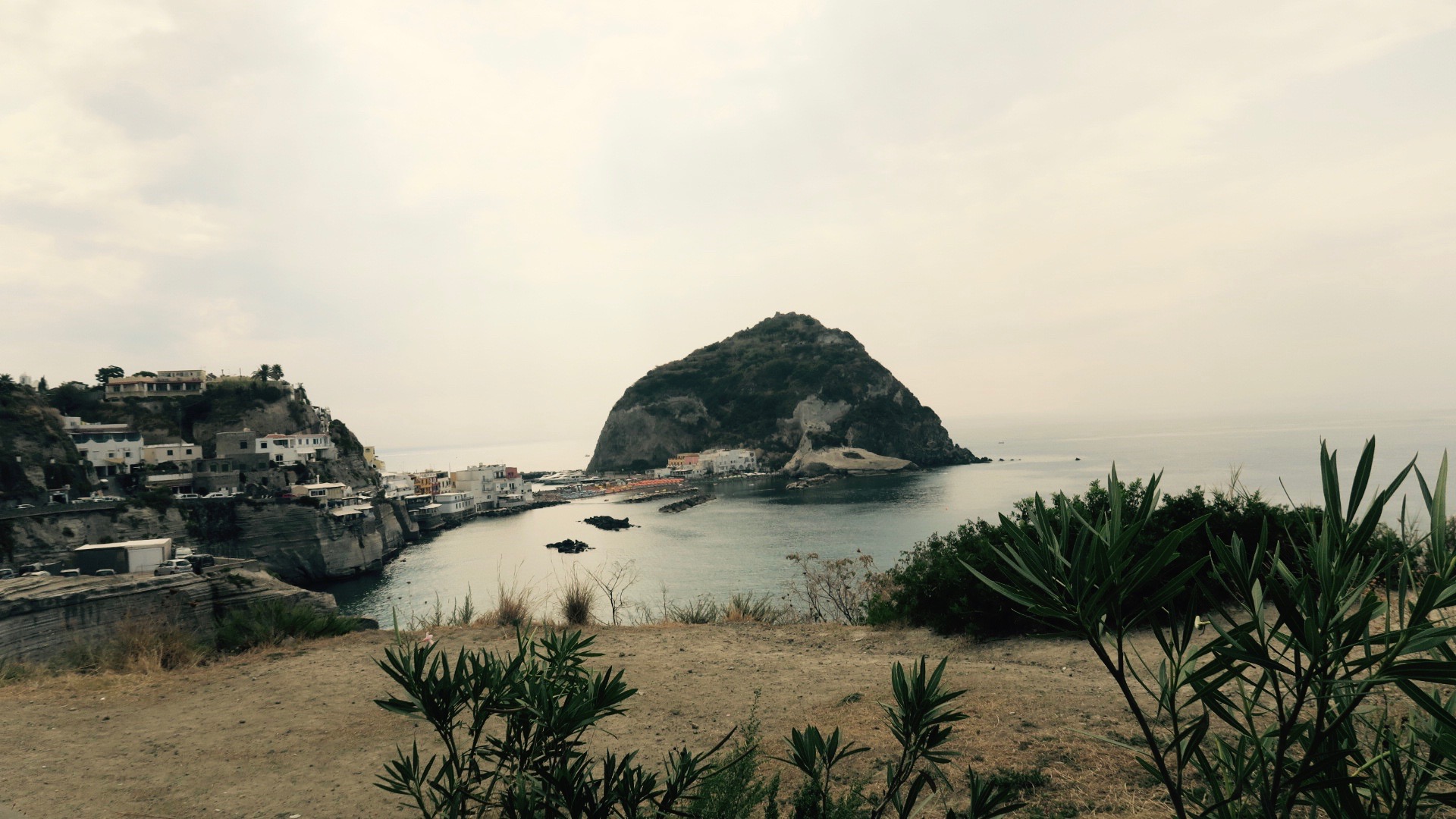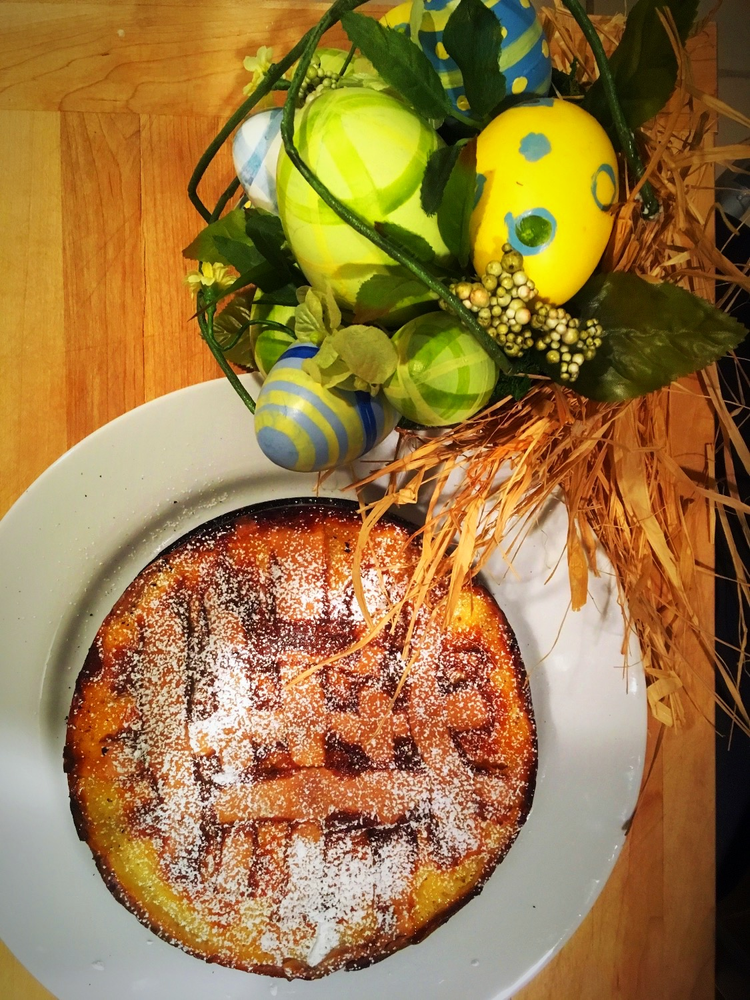La Bella Napoli
Bella Napoli. It’s chaotic, it’s extreme, it’s overpowering! It is a city that is edgy, daring, reckless. Naples’ gritty image keeps visitors away. But get past this, because la bella Napoli is worth getting to know. Not for nothing was the saying “vide Napule e po’ muore” (nothing compares to the beauty of Naples, so you can die after you’ve seen it) coined when Naples was at its golden age during the kingdom of the Bourbons. In fact, getting to know Naples could easily make you fall in love with it, right down to the last slice of pizza!
Up until I returned recently for a visit, I held a particular loathing and fear for Naples; my earliest memories are of a grey, dismal and loud city when as a little girl I feebly and bravely fluttered a little hand above the railing on the departure terrace of the port from where a towering ship would carry off my father to unknown lands and an unclear future. A year later, inexplicably and cruelly to the mind of a child, it was the place that cast me off from the country I had known as home.

Over the years my fears in returning to Naples were not unfounded. It is universally known that the dreaded Camorra has its tentacles gripping every aspect of Neapolitan street life. “Street vendors push stolen goods, hustlers set up rigged shell games and women of the night can be found offering their services on street corners.” Jack Lawrie, Camorra and the decay of Naples, April 2016. Tourists passing through the city have always been easy pray for scalpers and pickpockets.

The garbage crisis in Naples of a few years ago did nothing but exacerbate an already tainted reputation of the city and surrounding areas that were no longer what Goethe called “the most marvellous region of the world” J W Goethe, Viaggio a Napoli, 1787. Poets, writers and travellers alike once sang of the grandeur of this area. Naples was in its golden age the city of art, love, and philosophy — a city that wore her pleasures in the streets.
No more, say many visitors.
But Naples deserves better than this.
Certainly, the city exudes a tumultuous and chaotic vibe; the face it presents to the visitor seems tattered and unloved. Its peeling tawny coloured walls covered in grime and graffiti seem to speak of both apathy and neglect. But like an old book, Naples needs to be reappraised, its covers opened and its pages leafed through with new and more appreciative eyes.
I found myself doing just that with this last visit. I arrived hesitantly—- a necessary stop on our itinerary, and discovered a glorious and vibrant city of heart stopping works of art and panoramas, of passion and rage among her people, and of a sinister and savage but seductive beauty.
Appealing to my own sense of the theatrical, I found myself falling in love with her histrionics: everything is overplayed, from the effusive gestures of its citizens to the grandiloquent architecture that once boasted the riches of the Bourbon reign.
Crossing the historic centre of Naples one is assaulted by the noise and smells and colours of a city that has resisted gentrification: life tumbles out of the homes where the voices are too loud, the greetings unrestrained, the traffic outrageous; the odor of the sea assails the nostrils as unabashed fishmongers sell the day’s catch by howling at passers-by. Sheets and undergarments flutter on clotheslines hanging from building to building, while caffeine imbued air and the whiff of freshly baked sfogliatelle unexpectedly catch at your throat. It’s like a psychedelic spin on a joint, without the drug!




Situated on the Spaccanapoli, the main street that divides the colourful Centro Storico in half is the Piazza San Domenico Maggiore, one of the more interesting squares of Napoli. There, on a small street, Via Francesco De Sanctis, cloistered from the din of the city is the ,Cappella di Sansevero. Also known as the Alchemist chapel, this small oratory has become a museum. On entering it, one is struck by both its beauty and an overpowering sense of mystery. It is a place that exists out of time: otherworldly and enigmatic. The considerable amount of art and statuary subdues immediately, but it is the figure of the veiled dead Christ at the centre of the chapel that renders everyone speechless. Visitors, generally overcome with unaccustomed reverence, approach in silence, mouth agape, marveling at the masterpiece before them.
Il Cristo Velato, or The Veiled Christ, is perhaps one of the most beautiful and impressive works of art in the world. Created by the chisel of a young Neapolitan artist Giuseppe Sanmartino in 1753, this sculpture has both disconcerted and awed those enraptured by its beauty. The lifeless body of Christ covered by a transparent shroud was carved from a single slab of marble.
Among those contemplating its extraordinary beauty was Antonio Canova, often regarded as the greatest of the neoclassical artists who sculpted in marble, and who exclaimed that he would have given ten years of his life to have been the creator of such an incomparable work. “Cristo velato: il capolavoro” (in Italian). Museo della Cappella Sansevero.


While the centerpiece of the dead Christ is the magnet that draws most visitors to this Chapel, there are other notable sculptures to be admired in this sanctum: a woman, supposedly an allegory for Wisdom, has a veil delicately adhering to her body in such a way that the veil would almost seem to be dampened by the incense burners at her feet. Another breathtaking work of art is the sculpture of a man wrestling with an intricate net that would envelop him completely. The small figure below the man bearing a flame above its forehead is offering assistance in freeing the prisoner, and represents human intellect. How allegorical! And how marvellous! The Cappella di Sansevero is truly the city’s hidden treasure.

A 10 minute drive takes us to the Capodimonte Museum, the former Bourbon Royal Palace. This oasis of green parks, palm trees and stately gardens seems a world away from the bedlam of the city. I discover here balm for the frantic artistic soul: a few of Artemisia Gentileschi’s works set my heart on fire and when I finally arrive at Caravaggio’s dark Flagellation, my blood pressure goes soaring. So much emotion, and all in one day!




Back down in the dense lanes and alleys of the centro storico, and we are almost knocked off our feet by a passing lambretta with a man riding backwards on the back seat, arms outstretched and holding on for dear life to a life sized statue of San Gennaro, Naples’ patron saint. Miracles are almost by definition unpredictable and spontaneous, except here in Naples, where every year San Gennaro is believed to keep his appointment on September 19, his feast day, producing a scientifically inexplicable liquefaction of two ampules of his blood. September 19th is just around the corner; I’m tempted to change my itinerary and stay here, for a while longer!




There are of course lovely fashionable districts here where beautiful people parade up and down lavish, chi-chi boutiques and elegant cafés. But it is the crumbling palazzi, the disorderly streets that have not been sanitized with trendy wine bars and branches of Zara that are the beating heart of this city. Stewart,Stanley “Naples-Passion-and-death-in-Italys-underrated-gem”. The Telegraph UK, April 10, 2015
Naples remains stubbornly unique.

On the last afternoon of our brief stay, we decide to find the Naples Caruso sang about; the sole that has been immortalized in Neapolitan music, and the emotions poets like Totò (Malafemmena), Renato Carosone (Maruzzella), and Mario Trevi (Indifferentemente) left us. All it takes is a 2 hour bus tour from the Piazza Municipio. What follows is a joyous, once in a lifetime experience of all that is beautiful in life. With a silent but looming Vesuvius etched against the sky in the background, the bay of Naples caresses the shore of a vibrant and dynamic city, a city not for the delicate and fastidious tourist. Illuminated by a dazzling sun, Naples, exuberant, corrupt, colourful and extravagant is a masterpiece not to be missed.







